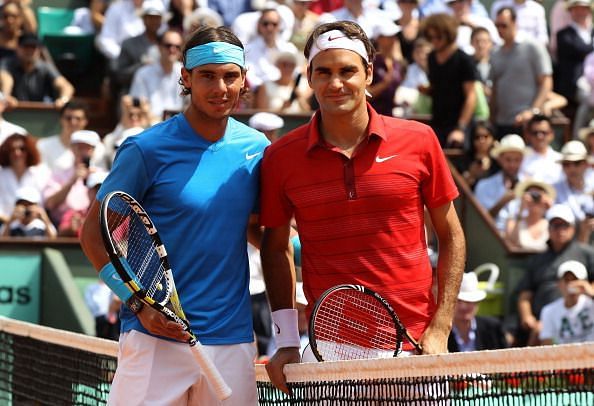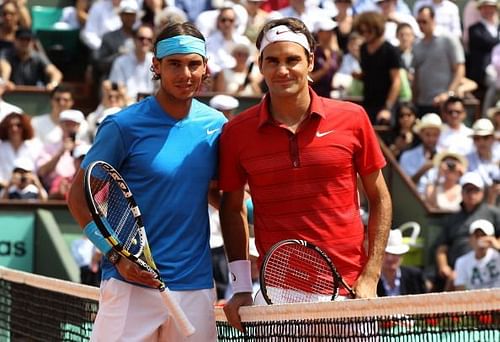
Federer, Nadal and Djokovic: The qualities that define the 3 legends of the game

Millennials, especially those born in the early 1990s and who follow tennis, have been privileged and blessed to witness a breathtaking era in the history of tennis that may never be surpassed or even equaled again.
These millennials have been inspired and enthralled by three names in tennis - Roger Federer, Rafael Nadal and Novak Djokovic - all of whom have a page reserved just for themselves in the history books of tennis. Not only has their excellence brought glorious days to the game of tennis, it has also captivated the imagination of the casual fan who views sport as a ray of hope, a source of energy that plays an integral part in their lives.
Be it Federer’s five-year invincible run from 2003 through to 2007, Nadal’s ownership of clay and date with destiny at Wimbledon 2008, or Djokovic’s non-calendar Grand Slam moment at Roland Garros 2016, the achievements of these three legends have repeatedly echoed in our minds and given us vicarious joy of the highest possible magnitude.
But what exactly defines these superstars on an individual level? What is that one remarkable thing that makes them stand out from the crowd?
Here’s my perspective on what defines these stalwarts on an individual level at this stage of their careers.
Roger Federer: The longevity
Even though it may sound inappropriate to compare two personalities from two different sports, Federer to tennis is what Sachin Tendulkar was to cricket. Just like Tendulkar, Federer has left behind colossal numbers to go alongside his unparalleled legacy. These numbers create a massive aura of invincibility around the great man.
Federer's achievements and performances on the court have personified the well-known term that we come across so often in management these days - ‘pushing the limits’. And to keep doing that with the same unadulterated passion for the game and zeal of a teenager at the age of 37 is incredible, and a remarkable story in itself.
Federer's 100th and 101st career titles at Dubai and Miami respectively are testimony to his longevity and undiminished hunger. The Swiss marches on and on, leaving us all dazzled in awe and admiration.
Just like Tendulkar, Federer has always risen to the challenge when people seemed to write him off. In fact, he has come back each time with a new, fresher and improved version of himself.
For how long will Federer continue? It is hard to imagine, but the Swiss maestro has always looked serene, calm yet fluent and dominant no matter what his age. His twin titles in 2019 seem to suggest that he is far from done yet, and make you wonder whether Federer can displace Jimmy Connors from the No. 1 spot in the all-time list of most titles won.
Rafael Nadal: The Comeback Man
In one of his recent interviews, Toni Nadal, the uncle and former coach of Rafa, said that his nephew is not a tennis player; instead, he is an injured person who plays tennis. This one sentence sums up Nadal’s relationship with the injuries that he has had to go through his entire career.
Nadal is injury-prone, and why wouldn’t he be? After all, he was born with multiple congenital bodily issues, which coupled with the physicality of his game are a recipe for disaster. Nadal's intensity on the court gives us an impression of a soccer player, and the pace with which he covers the court is analogous to a runner running a 100m sprint in the Olympics.
But despite all of that, Nadal has shown tremendous courage and will-power to bounce back from career threatening injuries. And he has done so over and over again.
The more injuries try to bog him down, the better is his comeback. His remarkable showing at the Australian Open earlier this year is a brilliant example of Nadal’s resilience and resistance.
The Spaniard's ability to rise like a phoenix from the ashes, not only while combating injuries but also while dealing with the low moments of his career, have made him even more of a role model than he already was. His comebacks have been a quintessential feature of his career, and have played a massive role in the making of the Nadal that we all know.
Novak Djokovic: The versatility
There's a reason why tennis is played on three different surfaces. That not only brings versatility to the game, but also brings to the fore the challenges and adjustments one must make to succeed in different environments.
While a majority of players struggle to remodel their game to suit the needs of the surface, one man who appears to be simply unfazed by all of it is none other than the Serbian Novak Djokovic.
Djokovic is perhaps the most versatile player that we have come across in a long, long time. And more importantly, he knows how to win matches and conquer tournaments against the best of the best on any given surface, making him a unique player in the history of our game.
He won Wimbledon and the US Open in 2018 and followed that with the Australian Open in 2019, and now stands on the cusp of yet another non-calendar Grand Slam as we approach the clay season. He already has one of those against his name, a feat he achieved when he crossed the final hurdle at the French Open in 2016.
By winning the 2019 Australian Open Djokovic has won three Grand Slams in a row for the third time in his career. He achieved this monumental feat not only in 2016 but also in 2012, only to be halted in his non-calendar Grand Slam bid by the mighty Nadal in the final of Roland Garros.
Djokovic's ability to effortlessly switch from one surface to another has given him something that even his biggest rivals Federer and Nadal don't have. The Serb is undoubtedly the best all-round tennis player of this generation.
The enormous joy and immense contribution that Federer, Nadal and Djokovic have brought to the court has certainly enriched the sport. It cannot be measured by numbers and cannot be described by words.
Going forward, let’s hope these stalwarts keep motivating us and blessing us with countless memories before they bid their final adieu to the game.